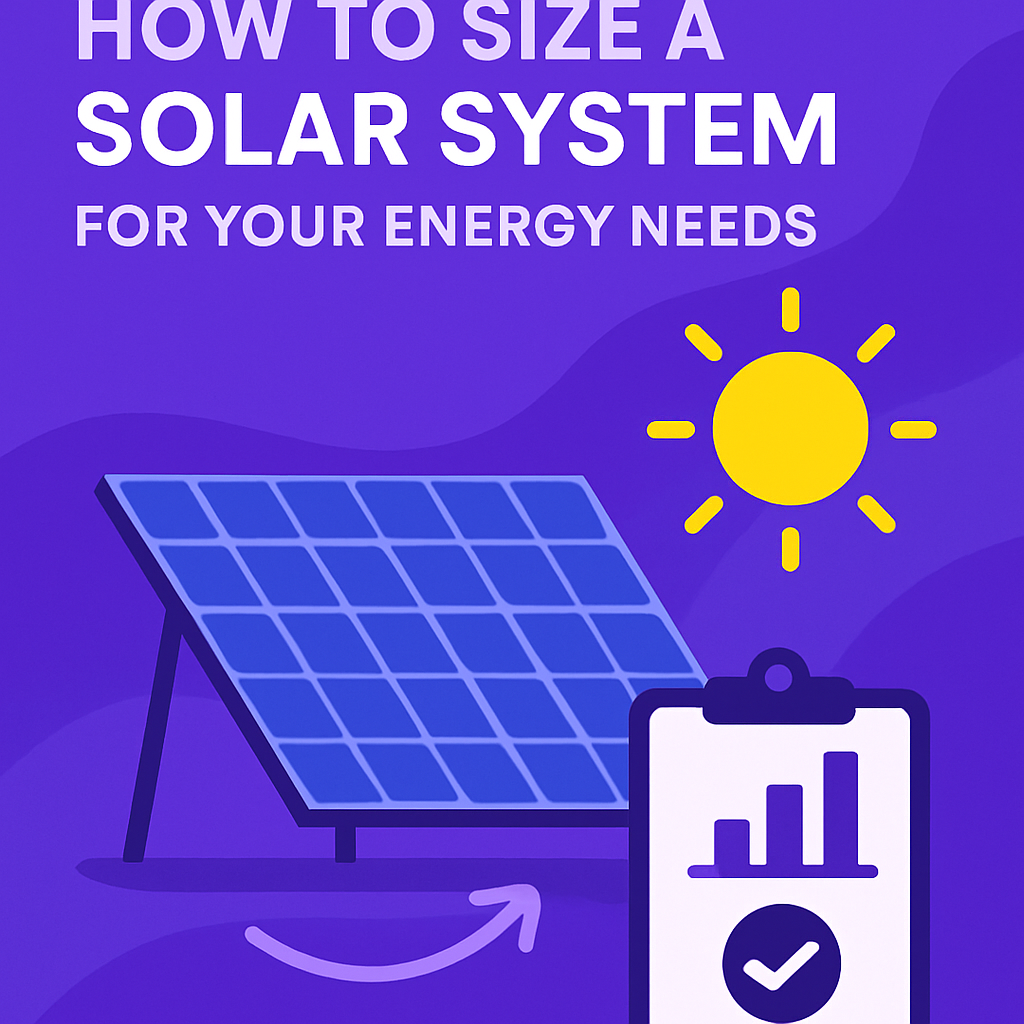How to Size a Solar System for Your Australian Energy Needs
As solar energy continues to gain traction in Australia, more homeowners and businesses are considering the shift to solar power to meet their energy needs sustainably. Understanding how to size a solar system is crucial for maximizing efficiency and achieving a healthy return on investment (ROI). This guide will walk you through the key considerations in determining the appropriate solar system size for your unique situation.
Understanding Your Energy Needs
The first step in sizing a solar system is to thoroughly understand your current and future energy needs. This involves assessing your electricity consumption patterns and any potential changes in your energy use, such as the addition of electric vehicles or changes in household size.
Analyzing Electricity Bills
Start by examining your electricity bills over the past 12 months. This will provide an average monthly and annual consumption figure, typically expressed in kilowatt-hours (kWh). In Australia, the average household consumes about 16–20 kWh per day, but this can vary significantly based on factors such as location, house size, and lifestyle.
Considering Future Needs
Consider any foreseeable changes that might affect your energy consumption. For example, if you plan to install an electric vehicle (EV) charging station at home, your energy needs will increase. Similarly, implementing commercial HVAC fit-outs or expanding your business premises can alter your energy profile.
Solar System Sizing Basics
Once you have a clear understanding of your energy needs, you can begin sizing your solar system. The goal is to generate enough energy to meet your consumption needs while also considering your budget and space constraints.
Panel Capacity and Efficiency
Solar panels come in various sizes and efficiency ratings. The output of a solar panel is measured in watts (W), and efficiency is the percentage of sunlight that is converted into usable electricity. Higher efficiency panels can produce more power in less space, making them ideal for those with limited roof space.
Roof Space and Orientation
The amount of available roof space and its orientation are critical factors. North-facing roofs are ideal in Australia, as they receive the most sunlight throughout the day. If your roof space is limited or not optimally oriented, consider higher efficiency panels to maximize output.
Calculating System Size
To calculate the size of the solar system you need, use the following formula:
[ text{Number of panels} = frac{text{Daily energy usage (kWh)}}{text{Panel output per day (kWh)}} ]
For example, if your daily energy usage is 20 kWh and you choose panels that produce 1.5 kWh per day, you would need approximately 14 panels.
The Role of STCs and LGCs in Solar ROI
Australia’s solar incentive schemes, such as Small-scale Technology Certificates (STCs) and Large-scale Generation Certificates (LGCs), play a significant role in the financial viability of solar investments. Understanding these can help optimize your solar ROI.
Small-scale Technology Certificates (STCs)
STCs are part of the Renewable Energy Target (RET) scheme and can significantly reduce the upfront cost of installing a solar system. The number of STCs you receive is based on factors such as system size, location, and installation date. Solar installers can often handle the STC application process, allowing you to receive the discount upfront.
Large-scale Generation Certificates (LGCs)
For larger installations, such as commercial solar projects, LGCs come into play. These are generated per megawatt-hour (MWh) of electricity produced and can be sold to offset the cost of the solar system.
Maximizing Solar ROI
Achieving a good return on investment with solar energy involves more than just optimizing system size. Here are additional strategies to enhance your solar ROI:
Energy Efficiency Upgrades
Prior to installing a solar system, consider energy efficiency upgrades. Enhancing the energy efficiency of your home or business reduces overall consumption, allowing you to install a smaller, less expensive solar system.
Battery Storage and Hybrid Systems
Installing battery and hybrid systems can further improve your solar ROI by storing excess energy produced during the day for use at night or during cloudy periods. This maximizes self-consumption and reduces reliance on the grid.
Maintenance and Repairs
Regular maintenance and repairs of your solar system can prevent efficiency losses and extend the lifespan of your investment. Scheduling routine check-ups and promptly addressing any issues that arise ensures your system continues to perform optimally.
Case Study: Residential Solar System Sizing in Australia
Let’s consider a typical Australian household in Sydney that uses an average of 18 kWh per day:
- Daily Energy Usage: 18 kWh
- Panel Output: 1.5 kWh per panel per day
- Required Panels: ( frac{18}{1.5} = 12 ) panels
With 12 panels, this household can meet its daily energy needs. By incorporating a battery storage system, the household can further optimize energy usage and reduce grid dependency.
Considerations for Businesses
For businesses, especially those with higher energy demands, the process might involve more complex calculations. Factors such as operational hours, peak demand times, and potential for expansion should all be considered.
Fleet EV Infrastructure
Businesses considering the integration of fleet EV infrastructure will need to account for the additional energy required for vehicle charging. This could significantly impact the size of the solar system needed.
Commercial & Strata Charging Solutions
Implementing commercial and strata charging solutions for tenants or employees can also influence energy demands and solar system sizing decisions.
Conclusion
Sizing a solar system for your Australian energy needs requires careful consideration of various factors, including current and future energy consumption, roof space, panel efficiency, and financial incentives. By following the guidelines outlined in this article, you can make informed decisions that optimize your solar investment and contribute to a more sustainable energy future.
Investing in solar energy not only reduces electricity costs but also supports Australia’s transition to renewable energy, aligning with both environmental goals and financial prudence. Whether you’re a homeowner looking to reduce your carbon footprint or a business aiming to enhance sustainability, the right solar system can make a significant impact.


